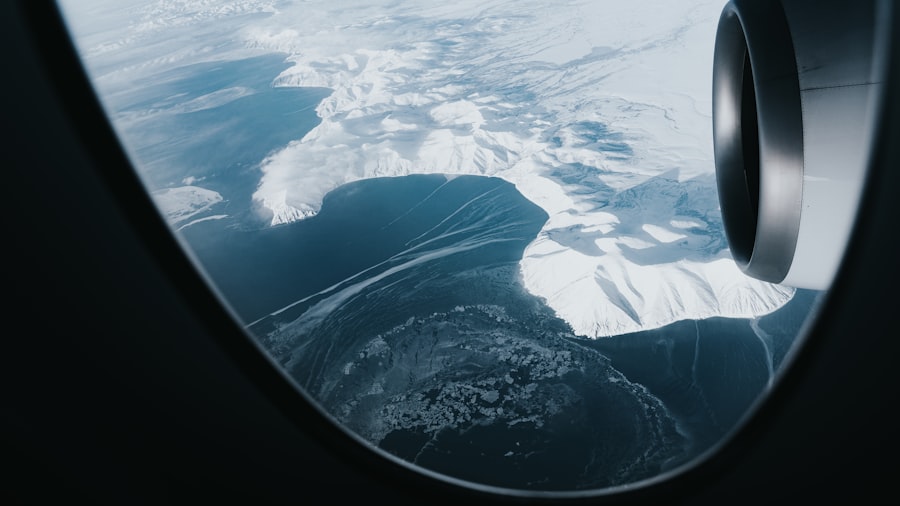The Bering Sea and the Drake Passage are two significant bodies of water that play crucial roles in the Earth’s climate, marine biodiversity, and historical navigation. The Bering Sea, located between Alaska and Russia, is known for its rich fishing grounds and diverse ecosystems. In contrast, the Drake Passage, situated between the southern tip of South America and Antarctica, is notorious for its treacherous waters and extreme weather conditions.
Both regions are not only vital for their ecological contributions but also serve as important routes for maritime navigation and trade. Understanding these two bodies of water requires an exploration of their geographical features, climatic conditions, marine life, historical significance, and the environmental challenges they face. Each area presents unique characteristics that contribute to their importance on a global scale.
As climate change continues to impact the world’s oceans, the Bering Sea and Drake Passage stand at the forefront of ecological and environmental studies, making them critical areas for research and conservation efforts.
Key Takeaways
- The Bering Sea is located in the northern Pacific Ocean, while the Drake Passage is located between the southern tip of South America and the northern tip of Antarctica.
- The Bering Sea is bordered by Alaska to the east and Russia to the west, while the Drake Passage is a narrow stretch of water between Cape Horn in South America and the South Shetland Islands of Antarctica.
- The Bering Sea experiences a subarctic climate with cold, stormy winters and cool, foggy summers, while the Drake Passage has a cold, windy climate with strong westerly winds and rough seas.
- The Bering Sea is home to a diverse range of marine life, including salmon, crab, and whales, while the Drake Passage is known for its rich biodiversity, including penguins, seals, and various species of seabirds.
- The Bering Sea has been historically significant for its role in the fur trade and the discovery of the Bering land bridge, while the Drake Passage is famous for being the route taken by Sir Francis Drake during his circumnavigation of the globe.
Geography and Location of Bering Sea
The Bering Sea is a marginal sea of the Pacific Ocean, bordered by Alaska to the east and Russia to the west. It is connected to the Arctic Ocean through the Bering Strait, which serves as a natural boundary between North America and Asia. The sea covers an area of approximately 2.3 million square kilometers, making it one of the largest seas in the world.
Its depth varies significantly, with the Aleutian Trench reaching depths of over 3,000 meters in some areas. The sea is characterized by its numerous islands, including the Aleutian Islands, which stretch in an arc from the Alaska Peninsula to Russia. The geography of the Bering Sea is marked by its rich underwater topography, which includes continental shelves, deep basins, and seamounts.
The sea’s location also makes it a critical area for migratory fish and marine mammals, as they travel between feeding and breeding grounds. The interplay between land and sea in this region has shaped not only its ecology but also the livelihoods of indigenous communities who have relied on its resources for centuries.
Geography and Location of Drake Passage

The Drake Passage is a body of water located between Cape Horn at the southern tip of South America and Antarctica. It is often regarded as one of the most challenging maritime routes in the world due to its unpredictable weather patterns and strong currents. The passage spans approximately 800 kilometers in width and connects the Atlantic and Pacific Oceans, playing a vital role in global ocean circulation.
Its depth varies significantly, with some areas reaching depths of over 5,000 meters. Geographically, the Drake Passage is characterized by its rugged terrain and dynamic oceanic conditions. The convergence of cold Antarctic waters with warmer currents from the north creates a unique marine environment that supports a variety of wildlife.
The passage is also known for its strong westerly winds, which can create rough seas and pose significant challenges for vessels navigating through it. This geographical positioning not only influences local weather patterns but also has broader implications for global climate systems.
Climate and Weather in Bering Sea
| Metrics | Values |
|---|---|
| Average Temperature | 2°C |
| Annual Precipitation | 600 mm |
| Wind Speed | 20 km/h |
| Sea Surface Temperature | 5-8°C |
The climate of the Bering Sea is primarily influenced by its geographical location and proximity to both Arctic and Pacific Ocean currents. The region experiences a subarctic climate characterized by cold winters and relatively mild summers. During winter months, temperatures can plummet below freezing, leading to ice formation in certain areas.
Conversely, summer temperatures can rise to around 10 to 15 degrees Celsius, providing a brief window for marine life to thrive. Weather patterns in the Bering Sea are highly variable due to the interaction between cold Arctic air masses and warmer Pacific air currents. Storms are common, particularly during fall and winter when low-pressure systems frequently develop.
These storms can bring heavy precipitation and strong winds, impacting both marine navigation and local ecosystems. The seasonal changes in weather also play a crucial role in the life cycles of various marine species, influencing migration patterns and breeding behaviors.
Climate and Weather in Drake Passage
The climate in the Drake Passage is notoriously harsh and unpredictable, shaped by its position at the confluence of several oceanic currents. The region experiences strong westerly winds that can create turbulent seas, making navigation particularly challenging for vessels traversing this route. Temperatures in the passage can vary widely, with summer months seeing milder conditions while winter brings frigid temperatures that can drop well below freezing.
The weather in the Drake Passage is heavily influenced by the surrounding landmasses and ocean currents. Storm systems can develop rapidly, leading to sudden changes in conditions that pose risks to maritime travel. The passage is known for its high waves and rough seas, which have earned it a reputation among sailors as one of the most treacherous waters in the world.
Despite these challenges, the unique climatic conditions also contribute to a rich marine ecosystem that thrives in this dynamic environment.
Marine Life in Bering Sea

The Bering Sea is renowned for its rich biodiversity, hosting an array of marine species that thrive in its nutrient-rich waters. The continental shelf provides an ideal habitat for various fish species, including cod, pollock, and halibut, making it one of the most productive fishing grounds globally. Additionally, the sea supports large populations of marine mammals such as seals, sea lions, and whales that migrate through its waters in search of food.
The unique ecological conditions of the Bering Sea foster a complex food web that sustains both commercial fisheries and indigenous communities. The upwelling of nutrient-rich waters supports phytoplankton blooms, which serve as the foundation for the entire marine ecosystem. This abundance of life attracts not only fish but also seabirds that rely on these resources for survival.
The interdependence of species within this ecosystem highlights the importance of maintaining healthy marine environments for future generations.
Marine Life in Drake Passage
The Drake Passage is home to a diverse array of marine life that has adapted to its challenging conditions. The cold waters are rich in nutrients due to upwelling currents, supporting a variety of species including krill, which serves as a crucial food source for larger animals such as whales and seals. The passage is particularly known for its populations of humpback whales, orcas, and various species of penguins that inhabit nearby islands.
The unique ecological dynamics of the Drake Passage create a vibrant marine ecosystem that attracts researchers and wildlife enthusiasts alike. The convergence of different oceanic currents fosters a rich feeding ground for seabirds such as albatrosses and petrels that soar above the turbulent waters. This biodiversity not only contributes to the ecological health of the region but also plays a significant role in global oceanic processes.
Historical Significance of Bering Sea
The Bering Sea has played a pivotal role in human history, particularly concerning exploration and trade between Asia and North America. Indigenous peoples have inhabited the coastal regions for thousands of years, relying on its abundant resources for sustenance and cultural practices. The sea became a focal point during the age of exploration when European navigators sought new trade routes to Asia.
In addition to its historical significance for indigenous communities, the Bering Sea has been central to commercial fishing industries that have shaped economies on both sides of the Pacific. The discovery of rich fishing grounds led to increased maritime activity and competition among nations seeking to exploit these resources. This historical context underscores the importance of sustainable management practices to ensure that future generations can continue to benefit from this vital marine environment.
Historical Significance of Drake Passage
The Drake Passage has long been recognized as a critical maritime route for explorers and traders navigating between the Atlantic and Pacific Oceans. Its historical significance dates back to early European exploration when sailors sought passage around Cape Horn to access new territories in South America and beyond. The treacherous waters posed significant challenges but also opened up new opportunities for trade and cultural exchange.
In modern times, the Drake Passage remains an essential route for shipping traffic as well as scientific research expeditions heading to Antarctica. Its historical role as a gateway between continents continues to influence global maritime activities today. The passage’s challenging conditions have also made it a focal point for studies on climate change impacts on oceanic systems, further emphasizing its importance in contemporary environmental discussions.
Environmental Concerns in Bering Sea
The Bering Sea faces several environmental concerns that threaten its delicate ecosystems and biodiversity. Overfishing has emerged as a significant issue, with commercial fisheries depleting key fish populations faster than they can replenish themselves. This not only impacts marine life but also jeopardizes the livelihoods of indigenous communities that depend on these resources for sustenance.
Additionally, climate change poses a growing threat to the Bering Sea’s ecosystems. Rising ocean temperatures are altering species distributions and migration patterns while also affecting ice cover during winter months. These changes can have cascading effects on food webs and overall marine health.
Conservation efforts are essential to address these challenges and ensure sustainable management practices that protect this vital marine environment.
Environmental Concerns in Drake Passage
The Drake Passage is not without its environmental challenges as well. Climate change has led to shifts in ocean temperatures and currents that impact marine ecosystems within this region. As polar ice melts due to rising temperatures, freshwater influx alters salinity levels, potentially disrupting established habitats for various species.
Moreover, increased shipping traffic through the passage raises concerns about pollution and potential oil spills that could have devastating effects on local wildlife populations. The delicate balance of life within this unique marine environment necessitates ongoing research and conservation efforts aimed at mitigating these threats while promoting sustainable practices among maritime industries operating in this critical area. In conclusion, both the Bering Sea and Drake Passage are vital components of our planet’s ecological framework with rich histories intertwined with human exploration and exploitation.
Understanding their geographical features, climatic conditions, marine biodiversity, historical significance, and environmental challenges is essential for fostering sustainable practices that will protect these invaluable resources for future generations.
The Bering Sea and the Drake Passage are two of the most significant maritime regions in the world, each with unique geographical and ecological characteristics. The Bering Sea, located between Alaska and Russia, is known for its rich biodiversity and crucial role in global fisheries. In contrast, the Drake Passage, situated between the southern tip of South America and Antarctica, is famous for its turbulent waters and as a critical gateway for oceanic currents that influence global climate patterns. For those interested in exploring more about these fascinating regions and their impact on global geography, you can find additional insights in a related article on MyGeoQuest.
WATCH NOW! Drake Passage: Earth’s Deadliest Waters Revealed
FAQs
What is the Bering Sea?
The Bering Sea is a marginal sea of the Pacific Ocean located to the west of Alaska. It is bordered by the Bering Strait to the north and the Aleutian Islands to the south.
What is the Drake Passage?
The Drake Passage is the body of water between the southern tip of South America at Cape Horn and the South Shetland Islands of Antarctica. It connects the southwestern part of the Atlantic Ocean with the southeastern part of the Pacific Ocean.
How do the Bering Sea and Drake Passage compare in terms of location?
The Bering Sea is located in the northern hemisphere, while the Drake Passage is located in the southern hemisphere. The Bering Sea is situated between Alaska and Russia, while the Drake Passage is located between South America and Antarctica.
What are the major differences in climate between the Bering Sea and Drake Passage?
The Bering Sea experiences a subarctic climate with cold winters and mild summers, while the Drake Passage has a cold and stormy climate with strong winds and rough seas.
What are the main differences in marine life between the Bering Sea and Drake Passage?
The Bering Sea is known for its rich biodiversity and abundance of marine life, including various species of fish, seabirds, and marine mammals. The Drake Passage, on the other hand, is home to a diverse range of marine species, including penguins, seals, and whales, adapted to the cold Antarctic waters.
Which area is more challenging for navigation and why?
The Drake Passage is considered more challenging for navigation due to its notorious rough seas, strong winds, and unpredictable weather conditions. It is often referred to as the “roughest sea in the world” and poses significant challenges for ships and vessels crossing between South America and Antarctica.
